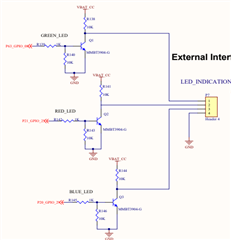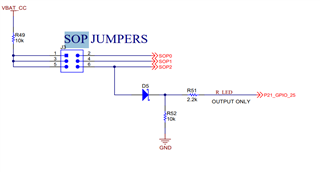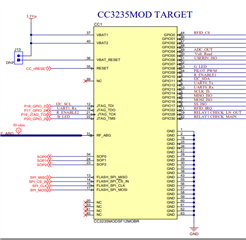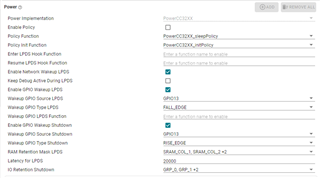Other Parts Discussed in Thread: CC3235SF
Tool/software:
Dear TI Support Team,
I'm using the CC3235SF and calling MAP_PRCMHibernateCycleTrigger() to enter hibernate mode with the internal RTC.
I've observed rare but unpredictable failures where the device does not wake up from hibernate. Most of the time, it resumes operation as expected, but occasionally it fails to do so without any clear pattern.
The setup appears correct, and I’m performing a clean reboot using the following function:
void RESET_COMPLETE_SOC(void)
{
int32_t retval;
retval = SlNetConn_stop(SlNetConnEventHandler);
LOG_INFO("SlNetConn_stop -> retval : %d", retval);
sleep(2);
retval = WIFI_IF_deinit();
LOG_INFO("WIFI_IF_deinit -> retval : %d", retval);
sleep(1);if(retval == 0 ){
MAP_PRCMHibernateCycleTrigger(); }else
{
while(1);//wait for watchdog reset}
} This function shuts down network services and the Wi-Fi interface, adds a short delay, and then calls MAP_PRCMHibernateCycleTrigger().
Could you please advise on:
-
Any known issues or limitations with using only the RTC as a wake-up source?
-
Whether any delays, sequencing, or additional steps are required before calling
MAP_PRCMHibernateCycleTrigger()? -
How to confirm that the hibernate interval is correctly configured and armed?
Additionally, I have the following hardware-related questions:
-
SOP0 and SOP1 are left not connected (NC).
-
SOP2 is connected to the anode of a diode, with the cathode tied to GND via a 10kΩ resistor, and also connected to the base of a transistor via a 1kΩ resistor.
Could this SOP configuration have any unintended impact on boot or wake-up behavior?
Also, UART_RX(used for flashing) is left floating (no pull-up resistor). Could this cause any issues during cold boot or hibernate wake-up?
Please have a look on below schematic snippet :


Can the following configuration cause any issues even if I callPower_disablePolicy()beforevTaskStartScheduler()inmain()?
-
Thank you for your support.

